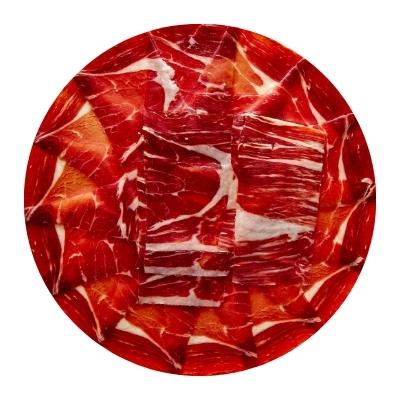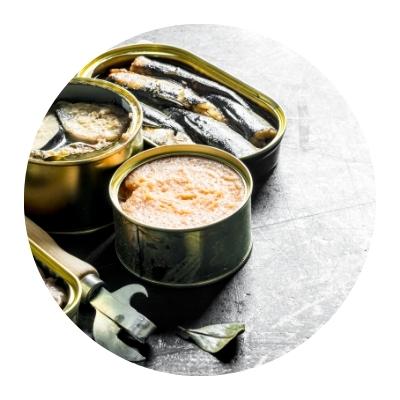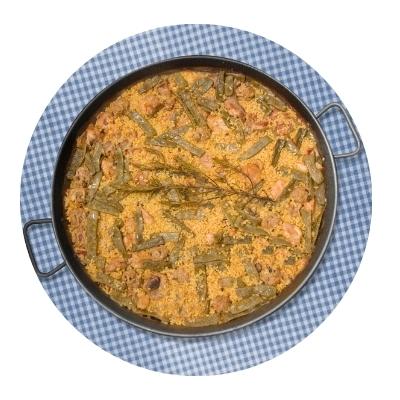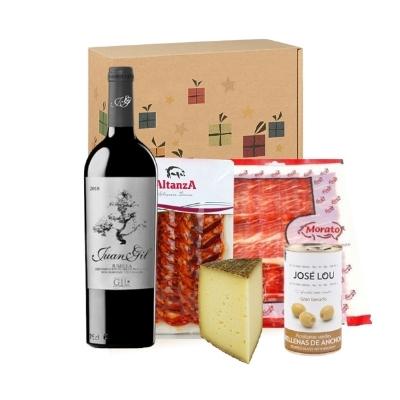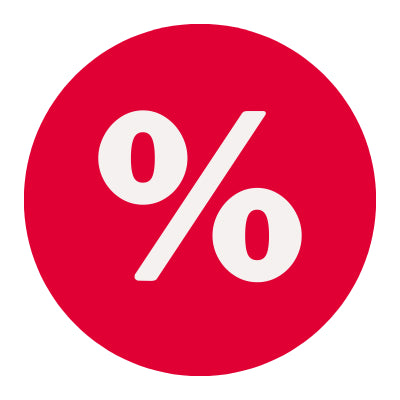Which Jamón is the healthiest, best and most expensive?
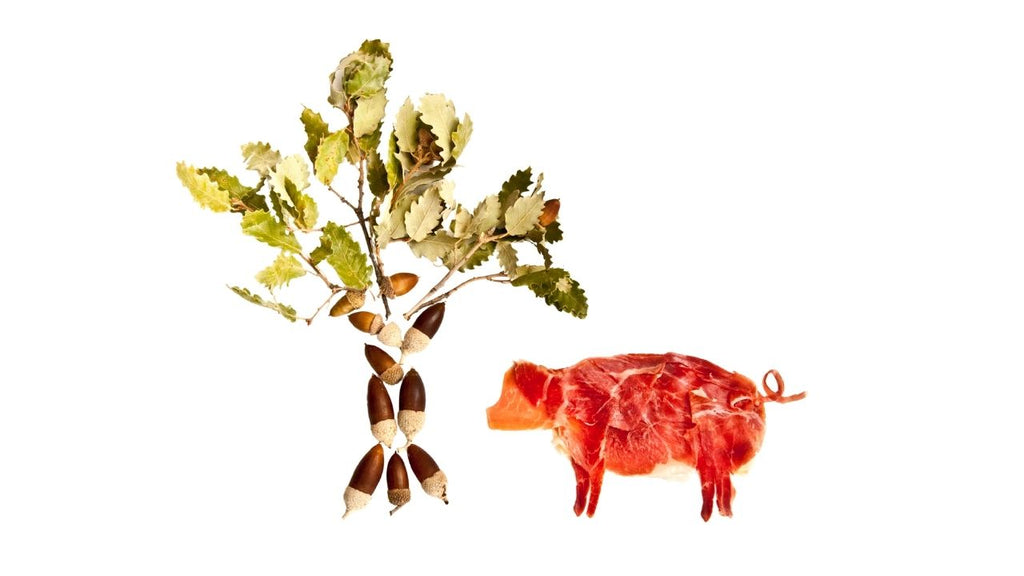
There is really nothing better than sitting down with friends on the terrace of a good bodega wine bar (observing the rules of distance and hygiene, of course) and enjoy a fine bottle of Reserva red wine to indulge in one, or better two, portions (Spanish: raciónes) of 100 grams each of hand-cut jamón ibérico de bellota or "pata negra", of "black leg”.

Which is the best ham in the world?
Without a doubt, Spanish "Jamones ibéricos" and the synonymously named "pata negra", "black leg", are the highest class of cured hams in the world. If the ham is also 100 per cent ibérico - the breed of pigs used and their genetics - and "de bellota", which means that they were fed exclusively with acorns, you have finally reached the Olympus of enjoyment. Of course, producers still play a role; the world's best are distributed in the mountainous regions of Western Andalusia (Huelva, Córdoba) and Extremadura, in the extreme southwest of Spain and in the southwest of the autonomous region of Castile-León. But there is also a protected Jamón D.O. region around Salamanca, Jamón de Guijuelo. And I should note, there are wonderful jamones ibéricos that are made from genetically "only" 50-75 per cent ibérico pigs (crossbreeding among the pig breeds does and did occur, of course), and fed on cereal feed - "de cebo". What to look for when buying Spanish cured ham has already been explained for you by our top chef Oche in his blog.
What does "Pata Negra" mean?
Translated "black leg", because of the darker meat of the Ibérico pigs. These are Ibérico hams, from purebred pigs and fattened on a pure acorn diet.
Top ibérico or "pata-negra" producers include 5J from Jabugo (Huelva) - note the place, one of the "meccas" of jamón ibérico fans - which Colono offers in convenient 80-gram packs, Joselito, Belloterra (Córdoba), with over three years of maturing or drying time or, for example, Juan Pedro Domecq.
When it comes to Serrano ham, it is at least worthwhile to go for "reserva", a longer maturing period, or, as we have newly added to our range at Colono, a Serrano ham from the Duroc breed of pig.

Which ham is the healthiest?
First, air-dried jamón, whether Serrano or Ibérico, is a healthy and delicious food. And probably one of the healthiest forms of meat consumption, based on free-ranged pigs living on the vast stone- and cork-oak groves. Low in fat, carbohydrate-free, rich in protein and nutrients, with minerals that are extremely important for our organism, such as phosphorus, magnesium, calcium, potassium, iron, and zinc, which strengthens the body's defences. The barely macerated serrano - the technical term for the fine veins of fat in the meat – is lower in fats, but the healthiest ham is the ibérico. This is because the black-haired ibérico pigs, whose exclusive diet is the fruit of the stone- and cork-oaks that grow in the West Andalusian, typical landscapes of the Dehesas, provide the meat for the hams with their fore and hind legs. This diet, and the predominantly free-range farming, ensure that the Jamón ibérico is extremely rich in mono- and polyunsaturated fatty acids and so-called antioxidants. In addition to plenty of B vitamins, especially B-1 and B-2, as well as B-12, vitamin E and trace elements such as selenium, the ham contains. Therefore, do not remove the fat next to the meaty parts of the ham, and get the jamón to at least room temperature before enjoying it. When the fat starts to shine in the light, that’s the right time.
-> Jan's tip: A trick I use with vacuum-packed portions at home and always recommend to friends and family is placing the unopened package in lukewarm or warm water. Before plating the slices and succumbing to its heavenly taste.
By the way, it should be mentioned here that since the immune system of the Ibérico pigs is more robust since they are kept in the wild and in a herd, antibiotics are also practically not an issue in the breeding of Ibérico pigs.
100 grams of Serrano ham contain, according to the analysis of the Spanish Nutrition Foundation:
Calories: 241 kcal - less than a bratwurstProtein 31 g
Fat: 13 g
No (!) Carbohydrates, or sugar
Calcium: 12.7 mg
Iron: 2.3 mg
Magnesium: 17.1 mg
Zinc: 2.2 mg
Potassium: 160 mg
Phosphor: 180 mg
Calories: 335 kcal
Fat: 22.2 g
Protein / proteins: 33.2 g
Calcium: 6.8 mg
Iron: 3.6 mg
Potassium: 655 mg
Magnesium 37.6 mg
Phosphor: 191 mg
Zinc: 3.5mg
How much does 1 kg jamón cost?
The top class of Ibérico ham (hind leg, "Jamón") costs about 60 to 90 euros per kilo, the front shank ("Paleta"), just as much of a treat, and usually a little fattier, is priced lower, and may well cost 35-60 euros per kilo. A 100-gram price of 15-25 euros is normal, although ideally you get it cut by hand, which means a clear plus in enjoyment - to cut an ibérico by machine is to me, and probably also to most Spaniards – almost an unforgivable sacrilege. If you buy a whole shank, you must multiply the price per kilo by the weight (bones included) - that is 60-90 euros x 5.5-7.5 kg, as a rough guide. There are cheaper pata negra ham hocks at Colono from Badajoz in Extremadura, with a four-and-a-half-year maturing period (!), but of course there are also even more expensive hams, and auctions for the gourmet jamones. The highest price achieved so far was in 2020 for a jamón ibérico from the southwestern Andalusian nature reserve of the Sierra de Aracena y Picos de Aroche - one of Spain's most famous ibérico regions - for an above-average 10-kilo hind leg (100 % ibérico breed, de bellota), which after drying (six to nine months) had reached more than five years of maturation and refining time, a whopping 1. 429,000 Japanese yen, almost 12,000 euros. That is the Guinness record, and that would also clarify the question on which is the most expensive ham in the world. Here, too, the Spaniards have the title of "Campeones", world champions, in addition to football!
Serrano hams, and I avoid the mass-produced export hams of Spain's largest meat producers that large supermarket chains offer in Austria or Germany, are indeed far cheaper. But in terms of value and money, they are usually a bitter disappointment. Here I recommend "reservas", because of their long curation period. Expect a price per kilo over 12 to 16 euros. For "Gran reserva" also around 20 euros. You can also get a jamón on offer for around 100-120 euros, the smaller "Paleta" for around 55-65 euros. The Trevélez jamones also have their own character. They are air-dried for a year on the southern slopes of the Sierra Nevada at an altitude of over 1500 to almost 2000 metres above sea level. The good ones from the Alpujarra region are slightly saltier on the palate, but at the same time leave a sweetish contrast in the mouth.
-> Jan's tip: Don't throw away the bone, even from Serrano ham. Because your trusted butcher will cut it into slices, which can be used to make a wonderfully hearty soup. Leftover meat cut into cubes is suitable for a variety of Spanish dishes, be it young beans, the green "habas", "huevos rotos", egg, fried potatoes, and diced ham, or simply add Salmorejo to the thickened form of the cold tomato soup Gazpacho!

What is the difference between Parma and Serrano ham?
The way Parma and Serrano ham are made is remarkably similar. Both are so-called raw hams. An extremely practical form of preservation for which our forefathers only needed salt. Parma ham has a maturing time of about one year, like the "normal" Jamón Serrano ("curado") and is lower in salt content. Unlike Serrano ham, it is cut paper-thin and by machine, and is more slippery in texture in the mouth, greasier and moister, because it contains a higher water content than a Serrano ham. And the Italian San Daniele ham has a much higher fat content, which is clearly visible. This is also true of Croatian pršut, which is, however, "drier", because it has less fat, than its Italian cousins.
How is Serrano ham made?
The jamón is washed with lukewarm saltwater and salted raw and then air-dried for a long time, a year or much more. Top hams from Spain in the “Pata-Negra”-category are also matured for four to more than five years, which is clearly reflected in the taste and quality. Unlike Tyrolean ham or Black Forest ham, neither Serrano nor Parma is smoked. The term "serrano" is derived from the Spanish word for mountain range or mountain country ("sierra" and "serranía"), the traditional and historical production areas, ideal for air-drying. Serrano and Ibérico hams are matured for between six and 18 months (from "curado" to "reserva" to "gran reserva"). In the process, a shank loses up to a third of its original weight.
And where is Serrano ham produced?
Everywhere in Spain. The prerequisite was originally the drier and cooler climate of the mountainous regions, as well as the central Spanish Meseta, the highlands of Castile. In the meantime, drying and ripening halls have become so technically advanced that the ripening process can be controlled everywhere.
Finally, Jan's tip: If you have a whole jamón or paleta shank in your house and have already cut it open, keep a piece of the fatty rind, and rub the cut with it after cutting the ham. This will prevent the area from drying out. Can a Jamón ham go mouldy? This is quite unlikely, depending on the humidity in the room where you store it. Spaniards usually cover it with a linen or cotton cloth. I know from experience that a jamón would keep for one to two months without any problems if I did not eat it sooner. And watch out! The jamón knife must always be sharpened. If you are a bit clumsy, you are strongly advised to use a cut-resistant stainless steel butcher's glove, the one you can also use for opening oysters.
SHARE:
